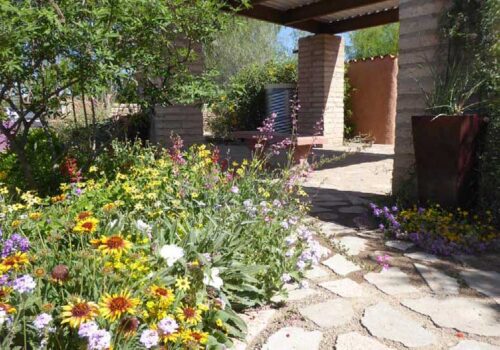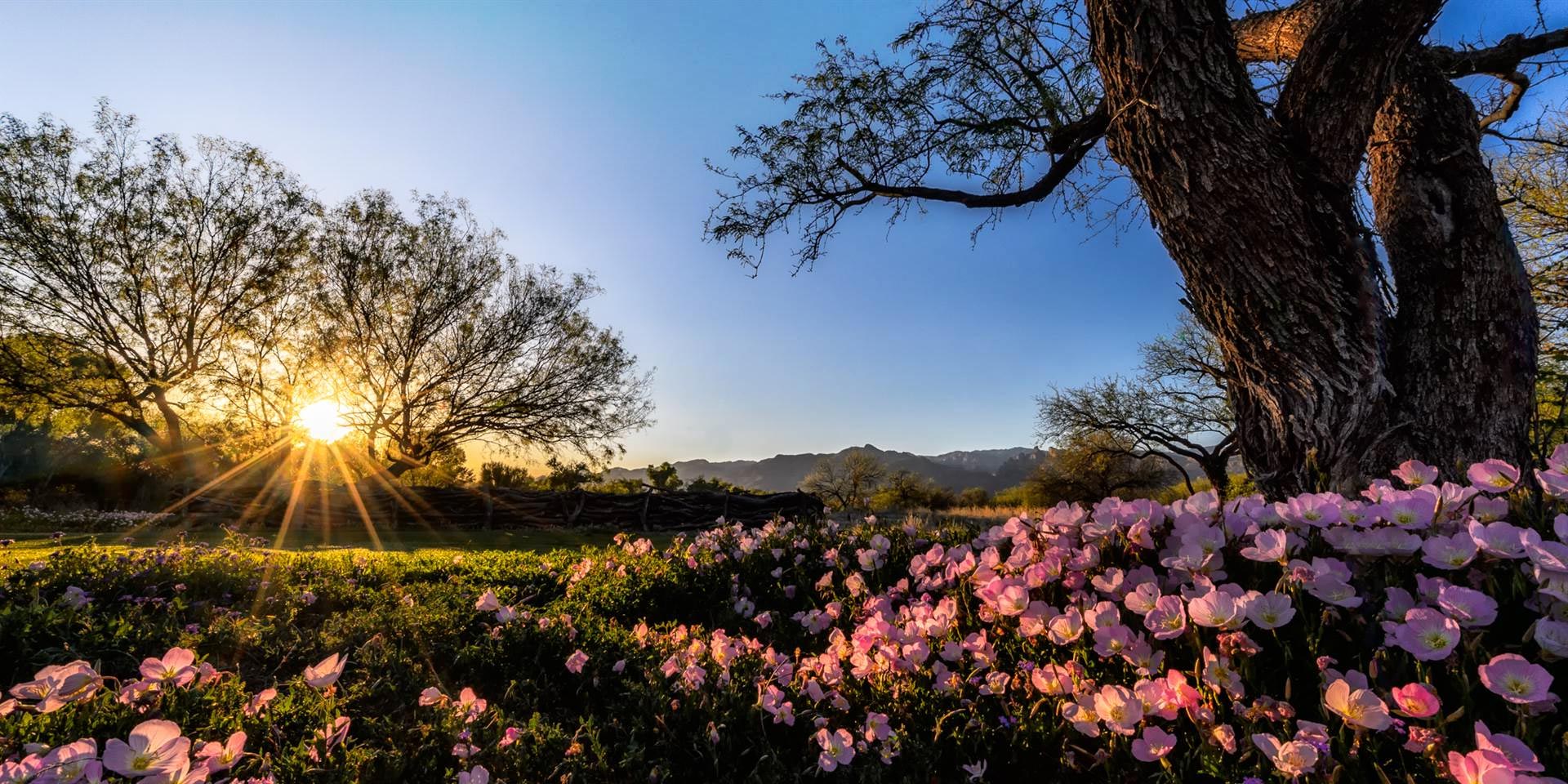Grow Native – From Plant Press Summer 2018
Posted Dec 22, 2020

Tucson Audubon Society’s Habitat at Home is a new program to encourage the use of native plants and rainwater harvesting to create wildlife habitat. Photo courtesy Tucson Audubon Society.
by Ries Lindley
Forty years ago when the Arizona Native Plant Society was founded, the sound of a Saturday in summer for many urban Arizonans was the power mower of the nearest neighbor, and it was usually under the bedroom window. A responsible homeowner spent many hours each summer watering, weeding, mowing, trimming, and fertilizing the lawn. The lawn might consist of any number of exotic grasses, all of which needed five or six feet of water per year to stay healthy. Yes, five or six feet; not five or six inches. Imagine the homes or apartments in your town with a wall six feet high around the entire boundary and filled to the brim with water.
A lot has changed. The early adopters of this change will remember when the sunny blooms of desert marigolds were just a patch of yellow calling attention to themselves as unsightly weeds, and having a mesquite tree in the yard was disgustingly messy. (Oh my! They leak sap and drop pods!) The new consciousness has been largely driven by water use, yet there have always been those who thought living within the local environment was the right thing to do. The rest of us have also picked up on the need to be one with Mother Nature, even if it was under the threat of duress. This issue of The Plant Press is devoted to exploring the many benefits, both real and intangible, that can be realized by using native plants for gardening, landscaping, and restoration projects.
Native gardening is an attitude, and even those who work hard at it still have epiphanies. Karen LeMay’s inspirational article “The Evolution of a Native Plant Garden (and Gardener),” is a lesson in self-awareness for us all. To be comfortable in our environment we must live within it, not in a bubble attached to it. Today, we are fortunate to have some good resources to help achieve that goal. Tucson Audubon’s Jonathan Horst and LaNella Gains offer us “Habitat at Home,” an article about a program that can guide desert dwellers in considering the whole of garden, environment, and habitat.
Val Morrill’s article describes a similar program, sponsored by the Arizona Wildlife Foundation in cooperation with the National Wildlife Foundation, which is available to all Arizonans. If you don’t live in the desert, then take some time to enjoy “Celebrating Native Gardens” by Jennifer Temkin of the Highlands Center for Natural History in Prescott. Some projects require a bigger hammer. Restoring damaged native habitat can be expensive if it involves a lot of acreage. For some excellent advice on restoration, take a look at John Scheuring’s “Using Native Succession Plants for Restoration Projects.” With a little care and forethought, nature will provide her own palette of native plants. If there’s no time to wait on nature’s natural succession, read Bill Thornton’s “Tucson Cactus and Succulent Society to the Rescue.”
Arizona’s awareness of native plants, their ecology, and the habitat they create has improved a lot in forty years. However, there is still room for growth. Whether you are a virtuous all native gardener, a recalcitrant backslider, or just plain curious, this issue of The Plant Press is for you. The resources discussed here are not necessarily all accessible to everyone, but most of them were developed by ordinary people with a keen interest in creating a tool box. The article describing the Desert
Survivors Native Plant Nursery in Tucson suggests one outstanding source of native plants in Southern Arizona. It is followed by a listing, by county, of other nurseries that carry at least some native Arizona plants.
Native gardening has room for ambitions great and small. You can start a restoration project, volunteer to help with one, or just ask your landlord if you can hang some native-bee houses in the shrubs outside. Every little contribution is a drop of water in the river that flows through time. Grow Native!

